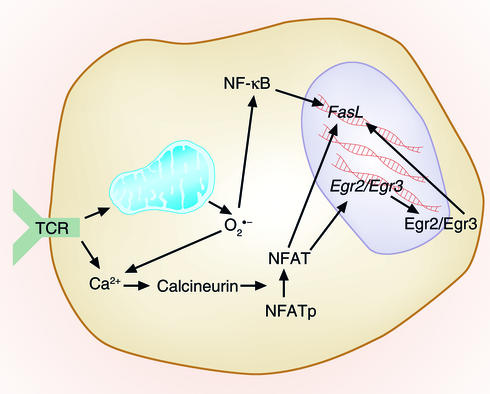Figure 2.
Control of AICD by ROS. T cell activation via TCRs leads to rapid generation of both superoxide and H2O2. TCR activation also leads to FasL induction. This occurs because TCR activation raises intracellular Ca2+ levels, thus activating the phosphatase calcineurin. Calcineurin dephosphorylates NFAT, and the now activated NFAT can migrate to the nucleus and contribute to FasL transcription directly via the NFAT-binding sites upstream of the gene. NFAT can also stimulate FasL transcription indirectly, by increasing transcription of the genes for the early growth response proteins Egr2 and Egr3, which in turn can themselves induce transcription of FasL. Another pathway that may be involved in FasL induction by ROS may involve signaling through NF-κB, via activation of IκB by H2O2. NFATp, phosphorylated NFAT.

